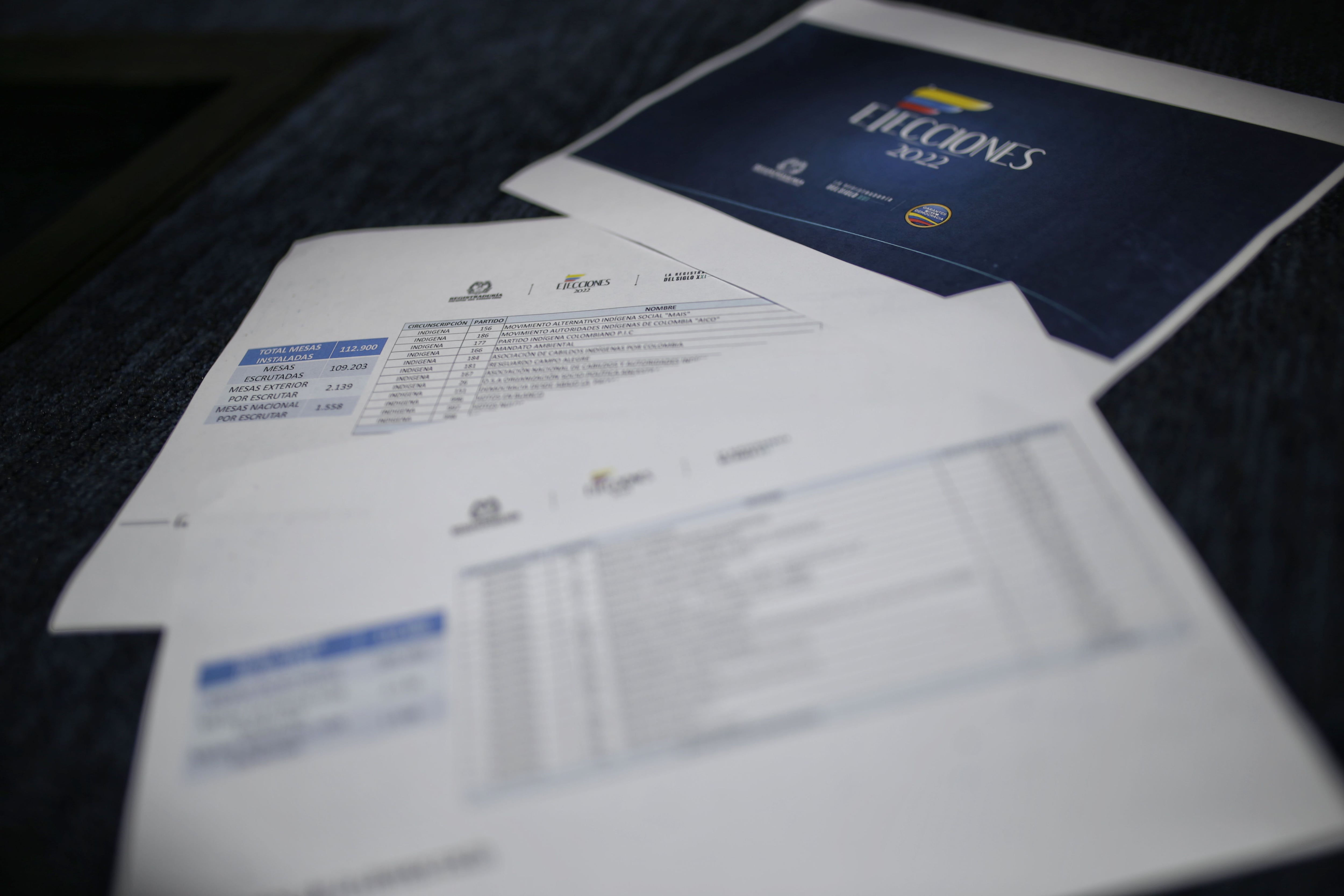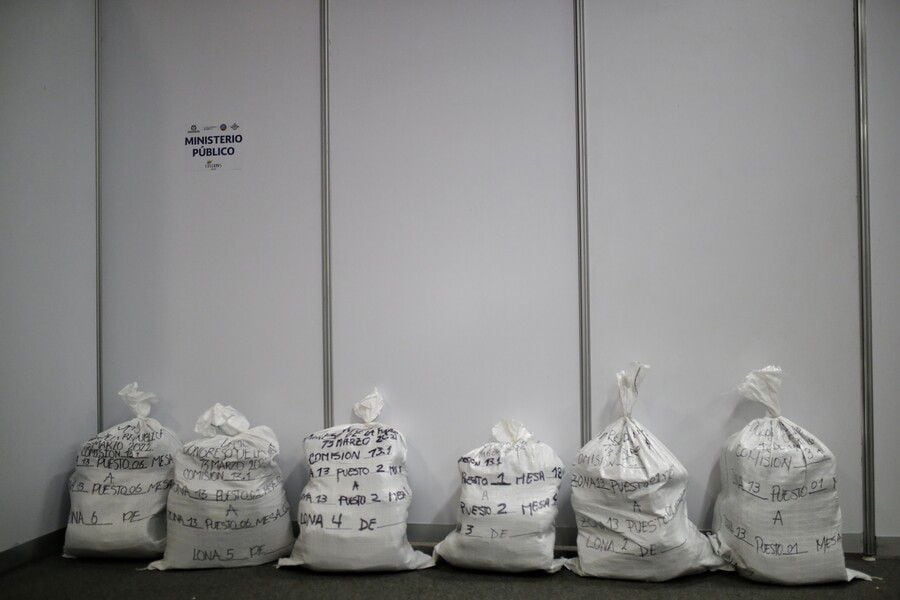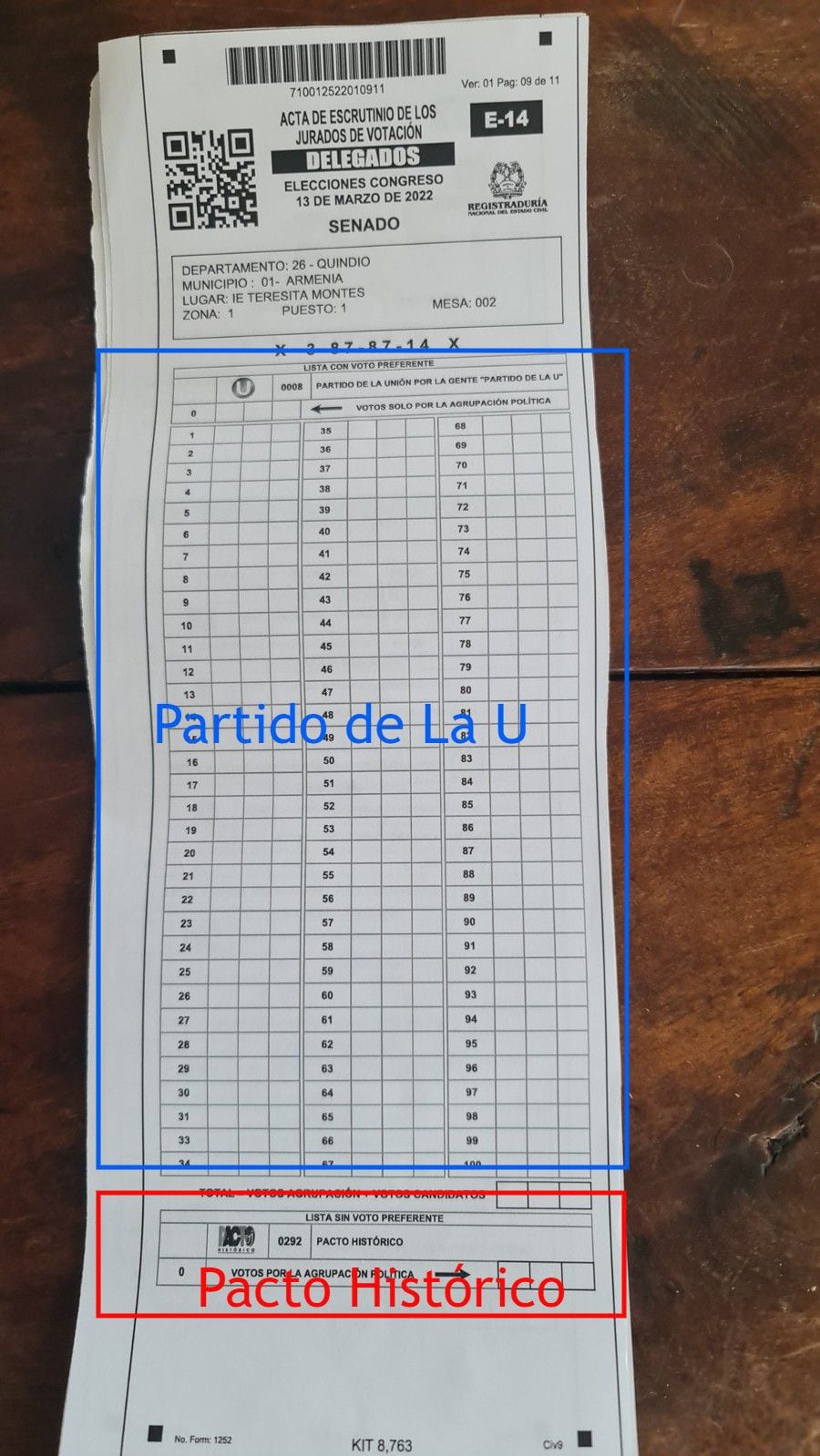
On March 13, the legislative elections were held in Colombia to elect the members of the Congress of the Republic for the period 2022-2026, which changed the distribution of political forces in the Capitol; but whose results have been questioned by numerous groups, parties and political leaders, leading to a an unprecedented situation in the country and possibly illegal: to conduct a general recount of the votes.
The Congress in Colombia is bicameral, composed of the House of Representatives and the Senate of the Republic, also considered the lower and upper houses respectively. The first is made up of 162 congressmen elected locally in each department and the second of 102 nationally elected senators.
To these should be added five members in each chamber assigned to the Commons party for the Teatro Colón peace agreement, 16 representatives of victims in the lower house by the same agreement, and an additional seat awarded to the second most voted in the presidential and vice-presidential elections, respectively, on May 29 or, in case of a second round, to the loser of this electoral round.
When the polls closed, at 4:00 p.m. on voting day, the electoral juries, who are citizens elected by lot, at the 112,900 polling stations installed throughout the country, had to count the votes at the polls and report them to obtain a first information on the results.

Juries must fill out a form called E-14 three times, one for the claveros, one for the departmental delegates of the National Civil Status Registry (the electoral authority) and one that is the one that is finally sent in order to report the result so that the information can be transmitted publicly. All three have the same information and are purely informative.
That night, late because the juries last counted the votes of the Senate, some first results came out that showed that the Historical Pact, the coalition of the left and opposition parties led by Gustavo Petro, was the most voted list.
With 99.41% of the tables informed, the Senate in Colombia would be made up of the Historical Pact and the Conservative party with 16 seats each, 15 seats of the Liberal Party, 14 of the Green Alliance Coalition Center Esperanza and 14 from the Democratic Center; 11 seats for the Radical Change party, 10 of the party of The Union for the People (Party of the U) and the Mira and Colombia Justa Libres Coalition with 4 spaces.
This was the result known after the first scrutiny, which is known as a pre-count and which has no legal validity for the formation of Congress, but it serves to build trust between the electorate and the parties about the public electoral process.
But this time it wasn't like that. These results are reported to the counting commissions, which are made up of the judges of the Republic, who must receive the votes cast at the ballot boxes and the counting records, in order to verify the data and make a new count that is the one that defines how many seats each party and group receives, called counting and which, after a certification from the National Electoral Council, becomes the official result.

That's where the problems began. The Historical Pact learned from the reports of the Registrar's Office that in more than 29,000 tables, that is 1 in 4, zero votes had been reported for its group, despite having been the most voted nationally. For their witnesses and observers, hundreds of thousands of votes had not been counted or reported to the electoral authority, and they were right.
Four days later, the Registrar's Office delivered a preliminary result of the count and the difference in voting for that political group was just over 390,000 votes above those initially reported, while other groups were subtracted some that had apparently been erratically attributed.
The Historical Pact, made up of left-wing parties that had been a minority in Congress, went on to have 19 seats, three more than in the first result. While the Democratic and Conservative Center, governing parties, and the Centro Esperanza Coalition, of moderate alternative movements, lost one seat each.
Petro's political alliance confirmed the irregularity they had denounced as a “historical blur of votes”, with shades of fraud, and the results were celebrated without raising mistrust in the process. But the annoyance arose from the governing parties, including former presidents Álvaro Uribe, natural head of the Democratic Center, and Andrés Pastrana, leader of the Conservative, who announced a fraud in favor of the left.
The electoral process raises a recount of the votes, only when the claveros (judges) find inconsistencies in the ballot records or when parties or candidates submit individual complaints on one of the 12 existing grounds. Through this mechanism, minority parties have regained seats in previous elections.
However, following controversy over the election results, Registrar Alexander Vega, supported by President Iván Duque, requested a general recount for the elections to the Senate, which is the one where the greatest irregularities in the count have been evidenced. An unprecedented situation in the country, which calls into question the process, and that it will be the National Electoral Council that will define whether it is carried out or not.
The Registrar maintains that it was not a fraud, although malicious situations have been evidenced, but that it corresponds to an error in the initial report of the results of the pre-count by the format of the E-14 forms and the jurors' disrespect in the processing instructions. Even so, it should be noted that the scrutiny carried out by judges is binding and irregularities are requested table by table, so some lawyers argue that a general complaint would not be allowed by the electoral law.
Alejandra Barrios, director of the Electoral Mission, explained in the Mesa Capital program that the design of the form left the voting report box of the Historical Pact in a small space compared to that of La U, which was located above it in the document. Because of this situation, when reporting the results, under the rush of March 13, some juries ignored the result of that coalition.

Before the elections, it was disseminated on social networks that the empty boxes of the forms were filled with asterisks to avoid an alleged alteration evidenced in previous elections, in order to avoid fraud. Many jurors, as stated by the Registrar, responded to this proposal instead of the one given by the electoral authority, crossed out the documents and this made it impossible to visually notice the numbers among the other figures made in the boxes in the data reporting.
The national Government has established a Commission on Electoral Guarantees to define how to conclude the poll and report official data. In the midst of the request for a new count, the opposition questions the custody of the votes, although that process is not yet finished.
KEEP READING:
Últimas Noticias
Debanhi Escobar: they secured the motel where she was found lifeless in a cistern
Members of the Specialized Prosecutor's Office in Nuevo León secured the Nueva Castilla Motel as part of the investigations into the case

The oldest person in the world died at the age of 119
Kane Tanaka lived in Japan. She was born six months earlier than George Orwell, the same year that the Wright brothers first flew, and Marie Curie became the first woman to win a Nobel Prize

Macabre find in CDMX: they left a body bagged and tied in a taxi
The body was left in the back seats of the car. It was covered with black bags and tied with industrial tape
The eagles of America will face Manchester City in a duel of legends. Here are the details
The top Mexican football champion will play a match with Pep Guardiola's squad in the Lone Star Cup

Why is it good to bring dogs out to know the world when they are puppies
A so-called protection against the spread of diseases threatens the integral development of dogs




